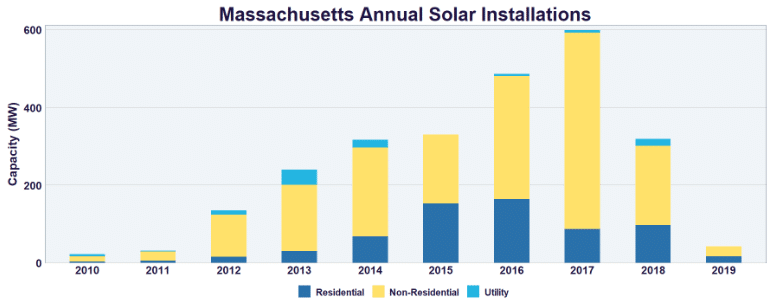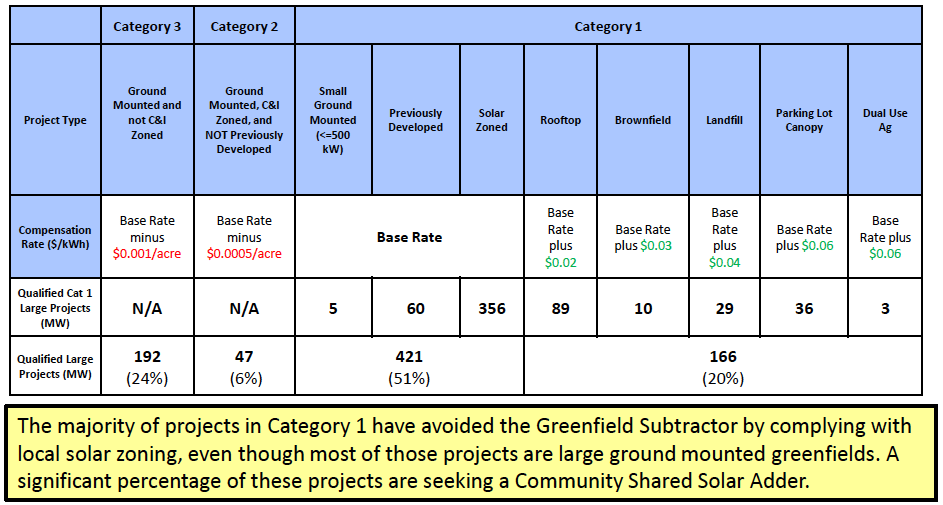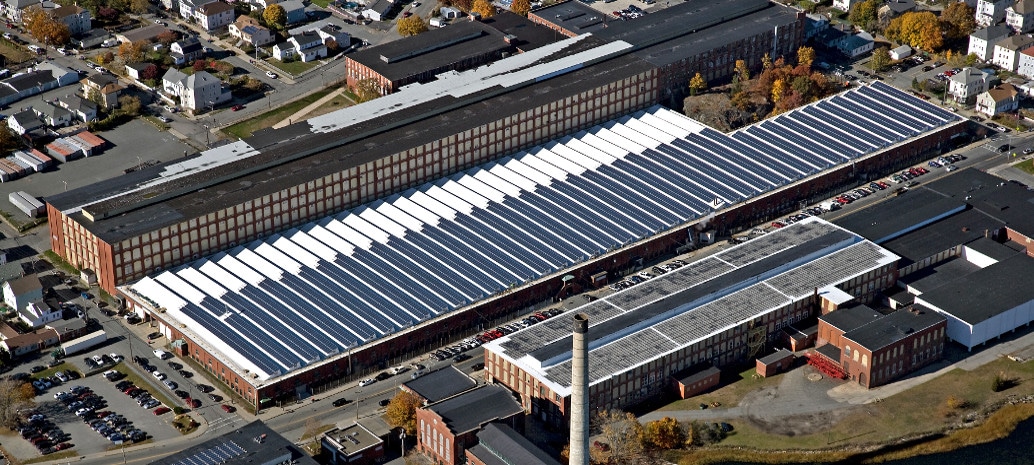Of all the policies for distributed solar in the United States, few are as sophisticated as what the administration of Governor Charlie Baker (R) came up with to continue the state’s solar progress. And yesterday the Solar Massachusetts Renewable Target (SMART) program took a step towards becoming even more sophisticated and refined, with the administration’s proposals to tweak the program as part of its first formal review.
The Massachusetts Department of Energy Resources (DOER) has proposed a number of changes to the program, which it plans to expand by 800 MW to 2.4 GW. In initial responses to the straw proposal, this was what advocates pounced on, with Vote Solar calling for an increase by 3.2 GW to 4.8 GW total, and Solar Energy Industries Association (SEIA) is also calling the 800 MW “insufficient”.
But there are a number of other important changes being proposed. Chiefly, DOER is also proposing to beef up the system of “adders”, by both maintaining current levels of incentives for parking canopy, rooftop, brownfield, landfill and dual-use agricultural systems, but also changing categorization to further penalize greenfield development. And this could have a big impact on the state’s leading community solar market.
Additionally, DOER’s straw proposal calls for all projects larger than 500 kW to include a storage component.
How big?
It’s a testament to the how well the SMART program appears to be working for the state’s solar industry that advocates’ chief concern is making the program bigger. And this trend of continually expanding solar programs goes all the way back to former Governor Deval Patrick’s (D) expansion of the state’s solar target first to 400 MW, and then 1.6 GW by 2020.
Both of those goals were met early, and the Baker Administration set a plan to double this through the SMART program. But with demand building up while the program design took longer than planned, some tranches of the program were fully subscribed a week after SMART opened.
And now, only a few months into the program, SMART has already hit its first deadline for a program review with 400 MW of projects having been allocated. And with a stated goal to provide a level of stability to the state’s solar industry, SMART will need to grow. But by how much?

Graphic: DOER
Vote Solar argues that the state will quickly blow through the additional 800 MW, but also that this will not allow the state to reach policy goals. “Without an increase of at least 3,200 MW to the SMART program, the Commonwealth risks falling short of its own renewable energy and decarbonization requirements, incrementalism that our communities and climate cannot afford,” states Sean Garren, the northeast senior director for Vote Solar.
One of the issues here is that solar has been doing most of the lifting for the state’s renewable energy goals and what little decarbonization of its power sector has been achieved. Given New England’s rampant and entrenched NIMBYism, it has been next to impossible to build land-based wind in the state or transmission lines to bring in more power from Québec. And while the state is planning large offshore wind projects, these are years away, and in the interim solar leads in-state renewable energy generation.
Massachusetts had a slow 2018 and sluggish first quarter of 2019 due to the delay in the SMART roll-out, but installed 500-600 MW of solar in 2016 and 2017. Were those rates of deployment to continue, this would mean that 2.4 GW of solar would be fully subscribed by the end of 2023.

Graphic: SEIA
Getting around the caps
Another issue that intersects with SMART is the state’s restrictive caps on net metering, which can be seen as a result of the dysfunctional politics in the Massachusetts House of Representatives under the leadership of House Speaker Robert DeLeo (D).
In the 400 MW review, DOER expresses the opinion that too many commercial and industrial (C&I) systems are being installed on a standalone basis, instead of as behind the meter installations. To address this the agency proposes to expand the Alternative On Bill Credit (AOBC) program.
Vote Solar’s Sean Garren notes that AOBC could be a way around the net metering caps, and that as such a program expansion is critical. But while he says that AOBC has been a success so far with developers, that very few projects have yet been built under SMART.
“We have no idea how (AOBC) works from a customer perspective,” Garren told pv magazine.
Greenfields or community solar?
Another one of the big issues that SMART has to deal with is the intense conflict over land use in Massachusetts, and the state’s strong desire to have solar in some places, and not others. SMART tacked this in the initial program design with a system of “adders” for preferred systems in preferred locations, including canopy, brownfield, landfill, and rooftop PV, and penalties for greenfield development.
DOER has noted that heavy penalties have largely kept solar out of sites that are not zoned for commercial and industrial use, including previously undeveloped site, but that there are still a lot of projects going into “greenfield” locations. The administration clearly wants to stop that, and as such is proposing to move all projects in solar-specific zoning to Category 2, which features the program’s highest penalty at $0.0005 per acre.

Graphic: DOER
DOER also notes that the projects proposed for greenfield sites are largely shared community solar, which presents the question of which is more important to Massachusetts – green fields, or community solar?
While Vote Solar objects to DOER’s proposed approach, it also says that the state can have both conservation and community solar. “We are hoping to work with conservation groups and DOER to figure out a more thoughtful way to figure out where to build solar, and how do we actually support conservation efforts elsewhere,” says Garren.
One of the ideas that Garren has proposed is a specific conservation fund for solar developers to pay into, so that land elsewhere can be protected from development, while still allowing community solar to thrive.
This content is protected by copyright and may not be reused. If you want to cooperate with us and would like to reuse some of our content, please contact: editors@pv-magazine.com.









By submitting this form you agree to pv magazine using your data for the purposes of publishing your comment.
Your personal data will only be disclosed or otherwise transmitted to third parties for the purposes of spam filtering or if this is necessary for technical maintenance of the website. Any other transfer to third parties will not take place unless this is justified on the basis of applicable data protection regulations or if pv magazine is legally obliged to do so.
You may revoke this consent at any time with effect for the future, in which case your personal data will be deleted immediately. Otherwise, your data will be deleted if pv magazine has processed your request or the purpose of data storage is fulfilled.
Further information on data privacy can be found in our Data Protection Policy.